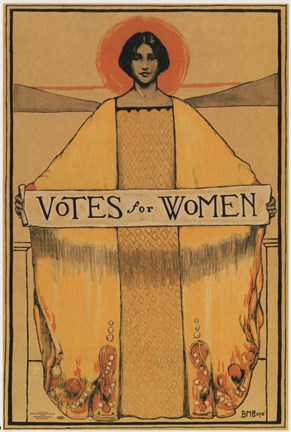 We may be working from home, but we are busy developing our next exhibit, Celebrating the 19th Amendment: Suffragists in Print. It’s hard to believe it was only 100 years ago that women finally won the vote. We say won, not given, because it was a decades-long, multi-generational battle by Suffragists.
We may be working from home, but we are busy developing our next exhibit, Celebrating the 19th Amendment: Suffragists in Print. It’s hard to believe it was only 100 years ago that women finally won the vote. We say won, not given, because it was a decades-long, multi-generational battle by Suffragists.
The Suffragist movement is historically recognized as starting in 1848, when the first women’s rights convention convened in Seneca Falls, NY. They met to “…discuss the social, civil, and religious condition and rights of woman.” Needless to say, they had a lot to talk about: owning property, retaining property in marriage, marriage equality, equal pay, labor reform, dress reform, and taxation without representation. It sounds archaic, and it was! After much debate and deliberation, the Suffragists determined the lynchpin to self-determination was the right to vote—the woman’s suffrage movement was born.
They were up against formidable odds: the law was against them, politicians dismissed them, and the press ridiculed them. The “Anti’s” called them unwomanly, un-natural, and emasculating, but still they persisted. Excoriated in the popular press, Suffragists started their own newspapers, publishing houses and printing presses. They learned how to set the type and run the press to paper the country with their own words.
This exhibition examines the legal status of women in the 1840s; what early, unsuccessful, forays towards ratification looked like; how those early woman of print fared in San Francisco’s unions; the movement’s increasing media savvy; who the Antis were and how they fought women’s suffrage; the tension between some Suffragists and other disenfranchised minority groups; and what the final campaign for federal ratification looked like in printed form.
Join us in a 70+ year retrospective of the suffragist movement focusing on the power of the printed word to celebrate the centenary of the 19th amendment.

